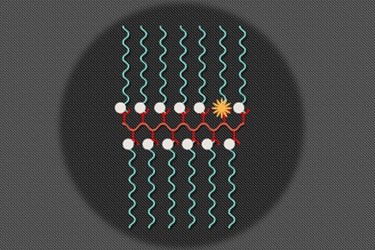Dual-Action Nanoparticle Allows Fluorescence Imaging And MRI
By Chuck Seegert, Ph.D.

A hybrid nanoparticle has been developed that is compatible with both fluorescence imaging and magnetic resonance imaging (MRI). The new agent may allow a better real-time understanding of tumor biochemistry and drug delivery.
Nanoparticles are a diverse and interesting area of the medical device research space. Functions for various nanoparticles seem nearly unlimited and can vary based on their composition and surface properties. The list of variables that can be manipulated is extensive, but it is not often that more than one function is incorporated into a single nanoparticle system.
Recently, however, a team from the Massachusetts Institute of Technology (MIT) has developed a nanoparticle system that can be detected by fluorescence imaging and MRI, according to a recent press release from MIT News. The polymer-based nanoparticles are assembled into a “branched bottlebrush polymer” configuration, in which 99 percent of the tendrils carry nitroxides and the other 1 percent carries Cy5.5.
The nitroxide portion of the molecules responds to MRI in a way that is very similar to existing heavy metal-based contrast agents, according to a recent study published by the MIT team in Nature Communications. In addition to reacting to MRI, the nitroxides also quench the Cy5.5 fluorescence until the molecule is in the presence of vitamin C. When vitamin C is present, the nitroxides preferentially bind to it, which reduces their visibility to the MRI, but increases the molecule’s visibility to fluorescence imaging.
The nanoparticle system was tested in mice where it accumulated in the liver, according to the press release. The liver, being rich in vitamin C led to a reduced MRI signature and enhanced fluorescent signal. In other areas of the mouse, where vitamin C was lower, the opposite was true.
“We think we may be able to reveal information about the tumor environment with these kinds of probes, if we can get them there,” said Jeremiah Johnson, an assistant professor of chemistry at MIT and senior author of the study, in the press release. “Someday you might be able to inject this in a patient and obtain real-time biochemical information about disease sites and also healthy tissues, which is not always straightforward.”
While dual-action nanoparticles for imaging are a new twist, other research teams have developed nanoparticles with multi-modality behaviors as well. For example, nanoparticles that enable radiotherapy and chemotherapy to be performed simultaneously were recently discussed in an article on Med Device Online.
Image Credit: Christine Daniloff/MIT
